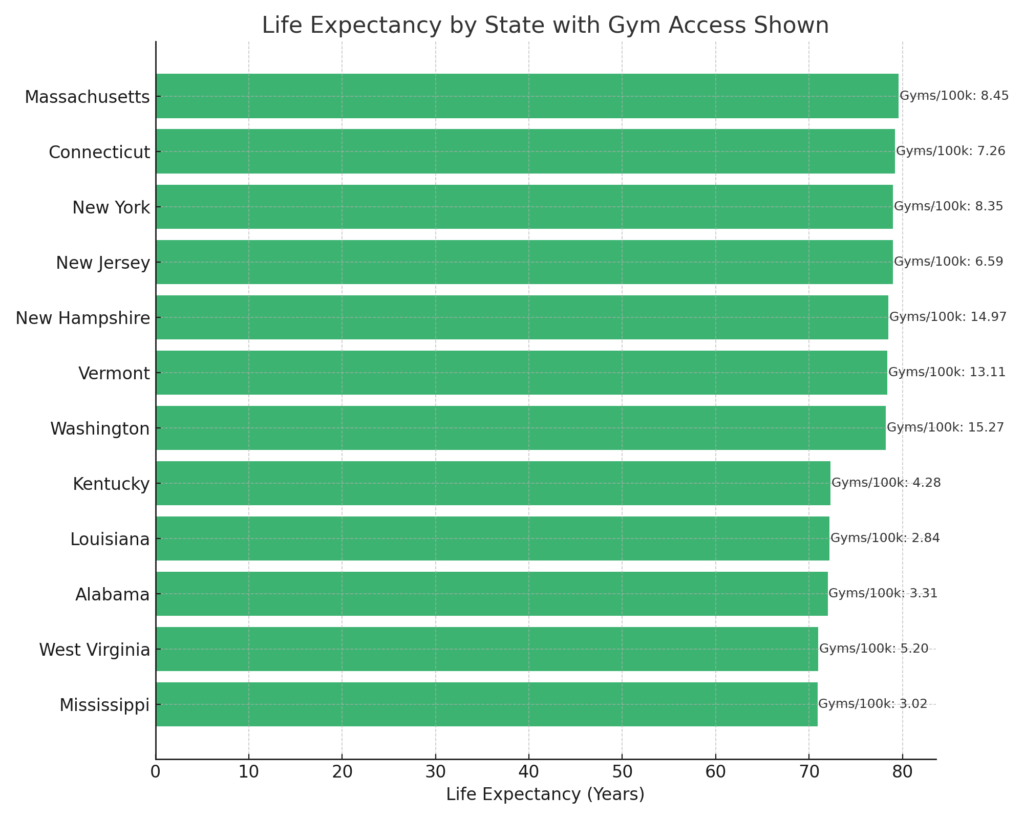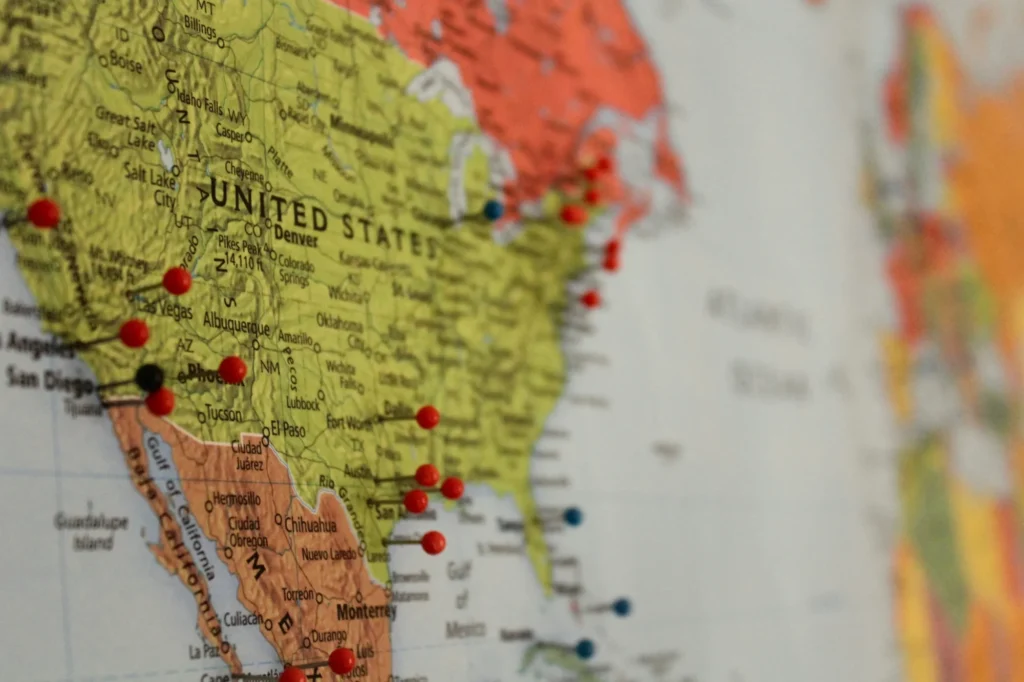States with limited fitness access are experiencing shorter lifespans, making the case that expanding into underserved markets could be both strategic and impactful
As Americans continue to prioritize wellness in 2025, a new report offers a state-by-state look at where people are living the longest and which lifestyle and environmental factors may be contributing to longer lives.
The report was commissioned by Nursa, a digital platform that connects healthcare facilities with licensed nurses for per diem shifts. To create the index, data was collected from the Centers for Disease Control and Prevention, the Environmental Protection Agency and U.S. OpenStreetMap. States were scored on factors tied to longevity, including access to parks, gyms, pools and walking trails, as well as pollution levels, smoking rates, hospital readmissions and the density of healthy versus unhealthy food retailers.
Altogether, the data reveals striking regional differences and points to the role that access to movement, nutrition and clean environments may play in how long people live.
A Lifestyle Advantage
Topping the list is Hawaii, where residents live to an average age of 79.9, followed by Massachusetts at 79.6 and Connecticut at 79.2. For fitness and wellness operators, the findings highlight the role of infrastructure in supporting long-term health and point to opportunities in regions aligned with active lifestyles and preventive care.
Hawaii’s top ranking is likely no surprise to longevity experts. Pristine beaches, lush trails and year-round outdoor activity all help promote regular movement and stress reduction. Hawaii also has one of the lowest pollution scores in the country, thanks to its ocean breezes and strict environmental protections, according to the report.
Massachusetts takes second place with 79.6 years of average life expectancy, supported by one of the nation’s lowest smoking rates (just 11.68% of adults). The state also ranks sixth in trail access, offering nearly 40 walking and hiking routes per 100,000 people, including a 90-mile stretch of the Appalachian Trail.
Connecticut comes in third, with a life expectancy of 79.2 years and a similar formula for success that includes low smoking rates, high trail density and abundant access to healthy food.
New York and New Jersey tie for fourth place at 79 years. New York stands out for its dense network of healthy food stores (35.16 per 100,000 residents) while New Jersey reports the fourth-lowest smoking rate nationwide.
Full Top 10 by Life Expectancy
Hawaii – 79.9 years
Massachusetts – 79.6
Connecticut – 79.2
New Jersey – 79
New York – 79
Minnesota – 78.8
New Hampshire – 78.5
Rhode Island – 78.5
Vermont – 78.4
California – 78.3
The Longevity Gap
At the other end of the spectrum, Mississippi’s shorter life expectancy (just 70.9 years) reflects broader health disparities in the U.S. The state ranks near the bottom for several key wellness indicators, including the second-lowest gym access, with only 3.02 gyms per 100,000 residents and the second-fewest walking, hiking and running routes. Additionally, nearly 20% of adults in Mississippi smoke, a behavior known to reduce life expectancy by up to a decade.
West Virginia (71 years), Alabama (72), Louisiana (72.2) and Kentucky (72.3) round out the five states with the lowest life expectancy.
Fitness Access, Lifespan Impact
While correlation doesn’t imply causation, the findings reveal a clear trend: states with lower gym access often report shorter life expectancy.

Mississippi, West Virginia, Alabama and Louisiana each have fewer than five gyms per 100,000 residents and a life expectancy below 73 years. In contrast, states like Colorado, Washington and New Hampshire rank among the top 10 for both gym access and longevity. Colorado leads the pack with 16.53 gyms per 100,000 people and a life expectancy of 77.7 years.
The pattern suggests that access to fitness facilities may be one of several factors influencing how long people live. For fitness and wellness operators, it’s a trend worth watching, particularly when evaluating growth strategies in markets with limited access to physical activity and rising interest in healthier living.



